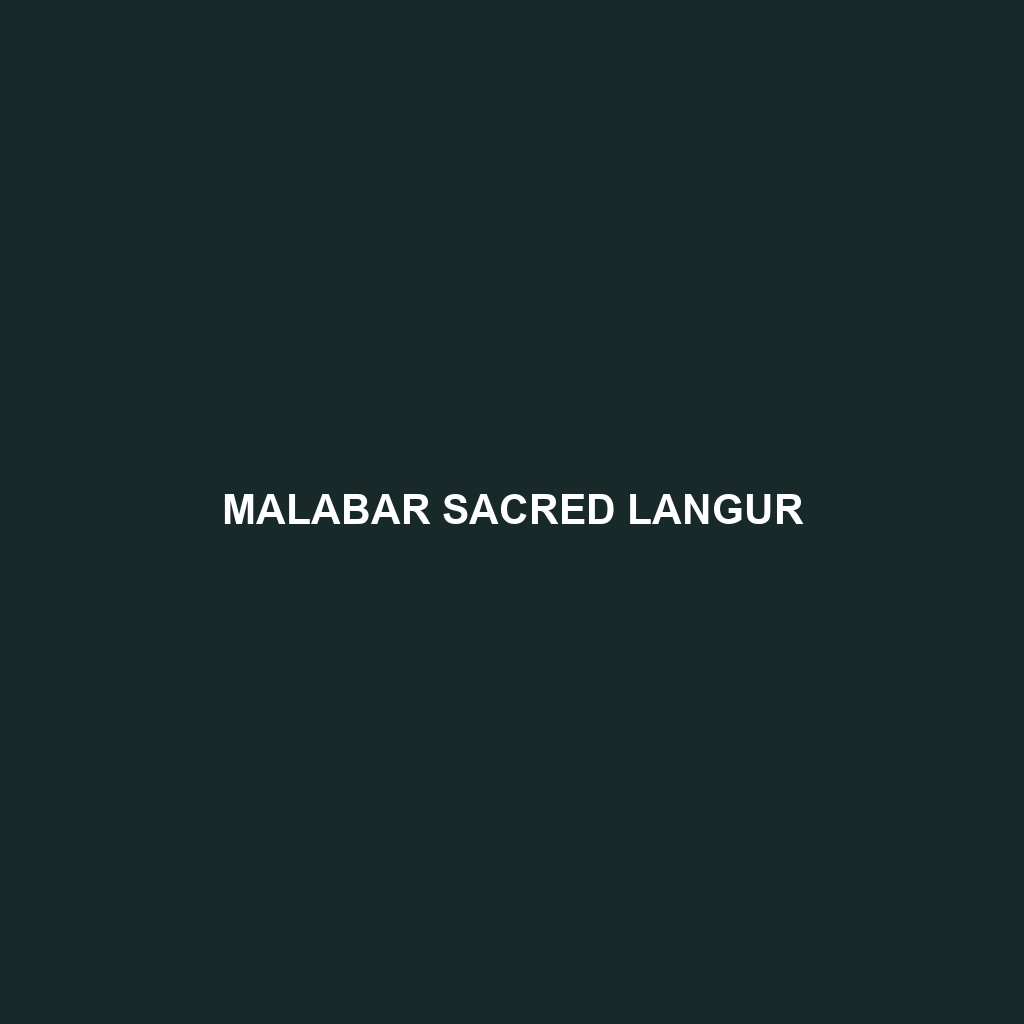Malabar Sacred Langur: A Comprehensive Overview
The Malabar Sacred Langur, scientifically known as *Semnopithecus hypoleucos*, is a striking and elusive primate species endemic to the Western Ghats of India. Revered in local cultures and recognized for its distinct appearance and behaviors, this langur plays a vital role in the ecosystem of its forested habitat.
Physical Characteristics
Size: The Malabar Sacred Langur typically measures between 50 to 70 cm in body length, with a tail that can be as long as 80 to 100 cm, aiding in balance and agility.
Coloration: This langur is distinguished by its glossy black fur, contrasted by a lighter underside. The fur around its face forms a fringed ruff, giving it a majestic appearance.
Special Features: One of the most noticeable features of the Malabar Sacred Langur is its expressive face, marked by deep-set, large eyes that provide excellent vision in the dense, shaded canopies of its habitat.
Behaviors
Social Interactions: Malabar Sacred Langurs are highly social animals, typically living in troops ranging from 10 to 20 individuals. These groups are matriarchal, with females playing a central role in decision-making and group cohesion.
Feeding Habits: Their diet primarily consists of leaves, fruits, flowers, and occasionally bark. As folivores, they have a multi-chambered stomach to help digest cellulose, allowing them to extract maximum nutrition from their leafy diet.
Ecological Roles: These langurs contribute to seed dispersal, which is crucial for forest regeneration. By feeding on a variety of plant species, they help maintain the biodiversity of their ecosystem.
Habitat and Adaptations
Habitat: The Malabar Sacred Langur inhabits the lush, evergreen forests of the Western Ghats, often found at elevations ranging from 300 to 2000 meters. These forests provide ample food resources and dense canopy cover, essential for their survival.
Adaptations: They possess strong, prehensile tails and long limbs, which are well-adapted for an arboreal lifestyle. Their keen eyesight and agile movements aid in navigating through the forest canopy, avoiding predators, and locating food.
Conservation Status
The Malabar Sacred Langur is currently listed as Vulnerable on the IUCN Red List due to habitat loss, fragmentation, and hunting pressures. Conservation efforts are focused on habitat protection, anti-poaching measures, and raising awareness about the species’ ecological importance.
Fun Facts
1. Cultural Significance: The Malabar Sacred Langur is often associated with local myths and beliefs, revered as a sacred animal in many communities.
2. Communication: These langurs use a range of vocalizations and body language to communicate, from loud calls that can be heard over long distances to subtle gestures and facial expressions within their troops.
3. Tool Use: Although not as well-documented as in some other primate species, there have been observations of Malabar Sacred Langurs using simple tools, such as using sticks to extract insects from tree bark.
The Malabar Sacred Langur is a fascinating primate with a unique set of attributes that make it an integral part of the Western Ghats’ biodiversity. Efforts to protect this species and its habitat are crucial for maintaining the ecological balance of this rich and vibrant region.
